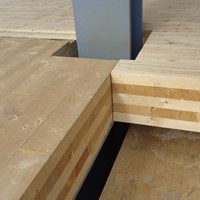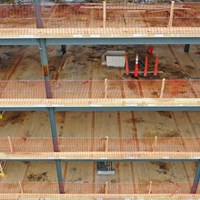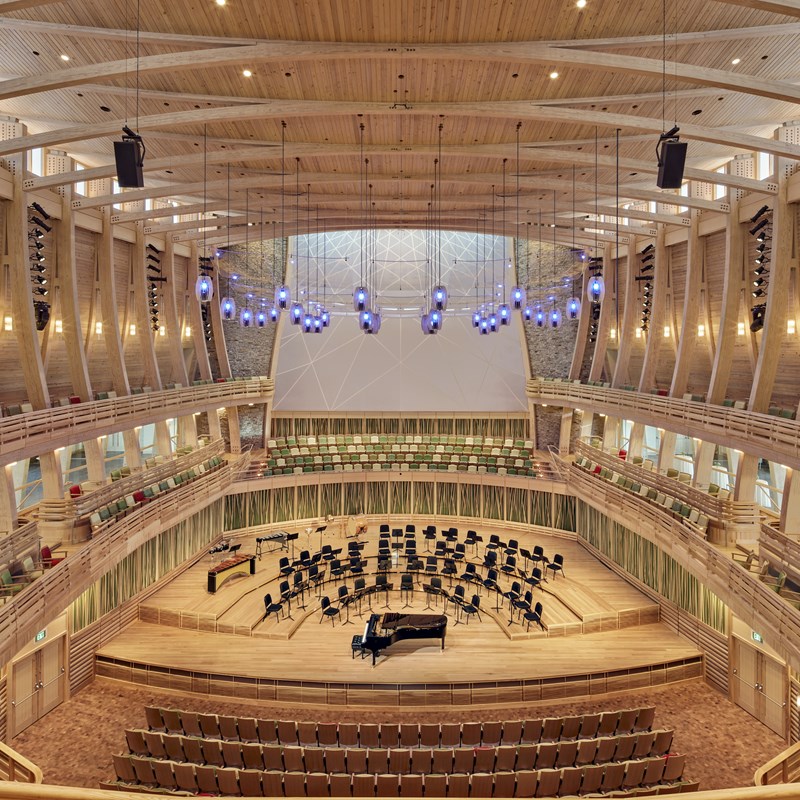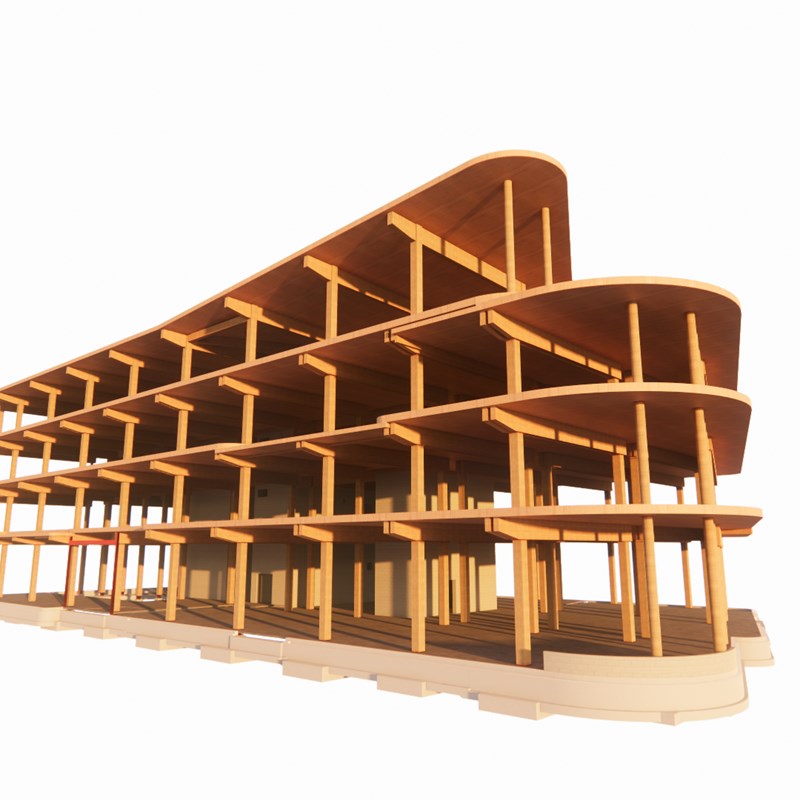June 26, 2020
Mass timber refers to engineered wood products that are laminated from smaller boards into larger structural components such as glued-laminated timber (GLT) or cross-laminated timber (CLT) panels. Methods of production include finger-jointing and bonding using both structural adhesives and mechanical fasteners to create large timbers.
These approaches address the natural inconsistencies of wood and make its mechanical performance more predictable. Smaller boards are easily inspected, graded, and with defects identified and removed, can be distributed throughout a structural cross section based on strength characteristics and specific structural requirements.
Using mass timber for buildings, whether on its own or in combination with other structural materials, can help to reduce the “embodied carbon” in construction – a key goal of sustainable design. The Carbon Leadership Forum defines “embodied carbon” as “...the sum impact of all the greenhouse gas emissions attributed to the materials throughout their life cycle (extracting from the ground, manufacturing, construction, maintenance, and end of life/disposal).”
Odeh Engineers is a leading structural designer of mass timber buildings, and can help clients understand the capabilities and benefits of these materials. We also work directly with fabricators to design detailed members and connections for mass timber systems.
Our principal David Odeh recently spoke about this topic on a webinar called "We Need the Forests to Fight Climate Change".






